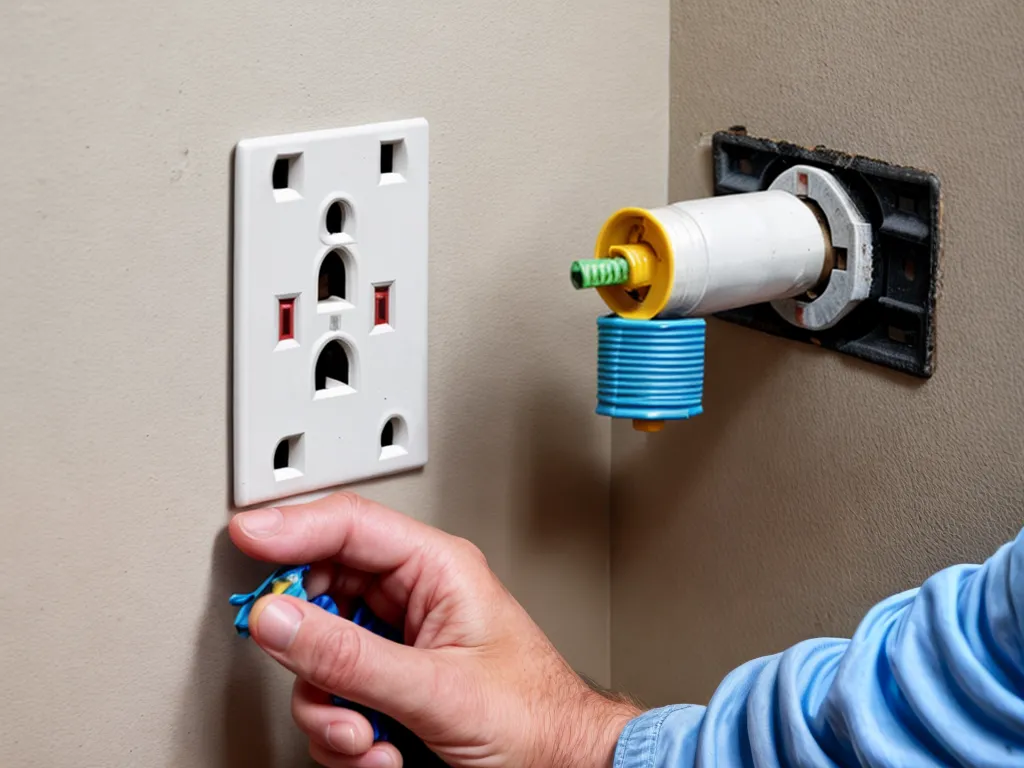
Fixing Faulty Outlets Yourself
Introduction
Electrical outlets are something we often take for granted, until suddenly they stop working properly. A faulty outlet can be a major inconvenience and potentially a safety hazard. Thankfully, many outlet issues can be resolved fairly easily by homeowners. In this article, I'll walk through the common problems with outlets and how to fix them yourself.
Safety Precautions
Before doing any electrical work, safety should always be your top priority. Electricity can be extremely dangerous if mishandled. Here are some key safety tips to follow:
- Turn off the power to the outlet at the breaker box. Ensure power is disconnected by testing with a multimeter or plugging in a light.
- Disconnect any appliances plugged into the outlet. You don't want them turning on unexpectedly while working.
- Use insulated tools and wear rubber gloves to avoid shocks.
- Never work on an outlet that is wet or damaged. Call an electrician instead.
- Cap off exposed wires with wire connectors to prevent accidental contact.
- Double check all connections before restoring power.
Common Outlet Issues
Here are some of the most frequent problems homeowners encounter with electrical outlets:
Loose Connection
Over time, vibrations and plugging/unplugging can cause wires to become loose at the terminal screws. This leads to flickering power or complete failure. Tightening the screws often fixes this quick and easy.
Worn Out Outlet
Old outlets eventually wear out from repeated use. You'll notice loose plug fitting or discolored/cracked plastic. Replacing the outlet restores a snug fit.
Faulty GFCI
GFCI (ground fault circuit interrupter) outlets protect against shocks. But their internal breaker can trip unnecessarily or simply stop functioning. Resetting or replacing the outlet usually remedies this.
Overloaded Circuit
Too many appliances on one circuit can overload and cause an outlet to trip, fail to reset, or feel warm. Check the circuit load and redistribute appliances if needed.
How to Fix an Outlet
Let's go through the steps for safely repairing a faulty outlet:
1. Turn Off Power
The first step is always to turn off power to the outlet at the main breaker panel. Double check it's off by using a non-contact voltage tester.
2. Remove the Outlet Cover
Unscrew and remove the outlet cover plate to access the outlet wiring. Place it aside carefully so no wires get disconnected.
3. Disconnect and Inspect
Unscrew the outlet from the electrical box and pull it out enough to access the wires. Check for any visibly loose, damaged or burnt wires.
4. Clean Connections
Use a wire brush to scrub corrosion and buildup off the wires and contacts. This improves connectivity.
5. Reconnect Wires
Refer to outlet wiring diagrams, and connect hot, neutral and ground wires to the matching screws or push-fit ports.
6. Secure the Outlet
Remount the outlet securely into the electrical box, and tighten the cover plate screws straight.
7. Restore Power and Test
With everything reassembled properly, restore power and test operation thoroughly. The outlet should now be repaired!
When to Call an Electrician
While many outlet issues can be DIY repairs, there are some cases best left to the professionals:
- If dealing with 220-volt circuits like for dryers or stoves
- For severe electrical damage like burnt/melted spots
- Aluminum wiring requires special handling
- With multi-wire branch circuits (shared neutral)
- If the outlet is handling major appliances or is the only one on a circuit
- When problems persist after DIY troubleshooting
Their expertise and special equipment can diagnose and access complex underlying electrical issues.
Conclusion
Fixing a faulty outlet is a common need for homeowners. With proper safety precautions and some DIY skills, many outlet problems can be quickly and economically solved. But also recognize when an issue requires calling a licensed electrician. A little electrical maintenance and outlet TLC can make your home wiring much safer and more reliable.